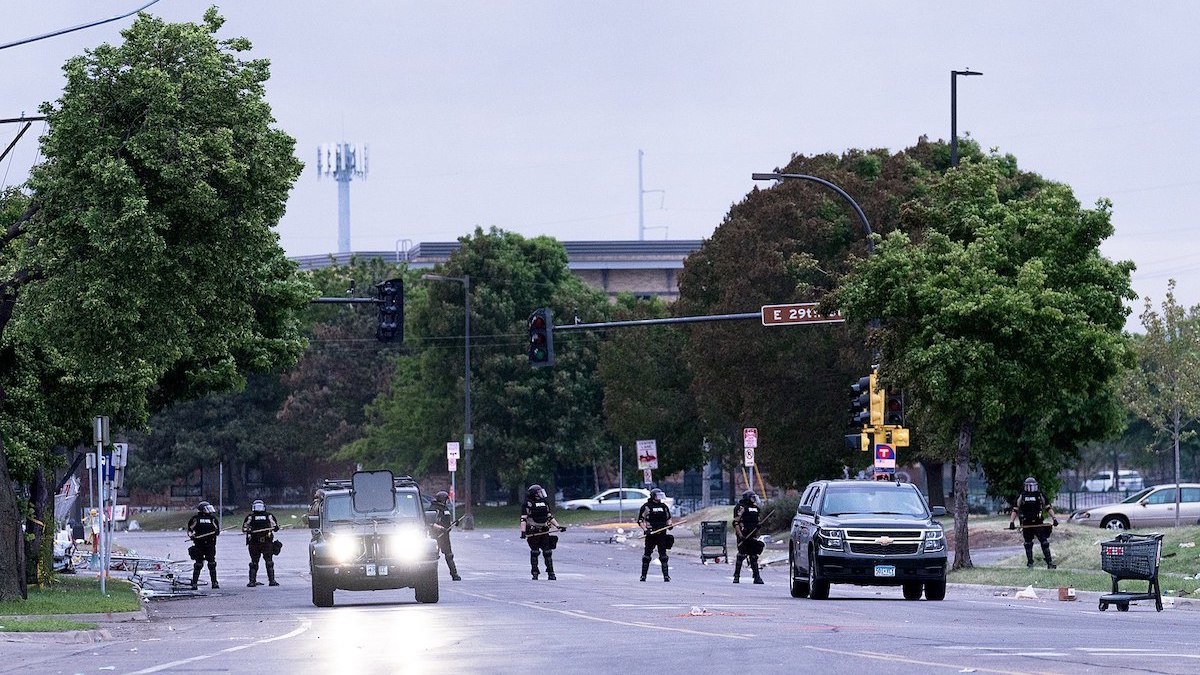National Guard officers stand in the Third Precinct in Minneapolis. | Wikimedia Commons/Lorie Shaull
National Guard officers stand in the Third Precinct in Minneapolis. | Wikimedia Commons/Lorie Shaull
Minnesota National Guard units were assembled for deployment in Minneapolis as the city faced rioting and looting May 28, but city officials never defined the guard’s mission, Minnesota National Guard Major Gen. Jon A. Jensen said at a Friday news conference.
“As we met as a senior team yesterday afternoon, the one topic that continued to be discussed was the lack of clarity and the lack of a mission and a description of what exactly the National Guard needed to do,” Jensen said, according to The Center for American Experiment.
Minneapolis Mayor Jacob Frey had asked Minnesota Gov. Tim Walz to mobilize the guard, the story said. On the evening of May 28, the police department’s Third Precinct was burned by crowds protesting the death of George Floyd, a black man who died during an arrest by Minneapolis police.
Walz considered sending in the National Guard May 28, but left the decision to local authorities, he told reporters.
“There was a decision during the day, whether, do you occupy the entire city and shut it down after those 24 hours? In retrospect I’m assuming that yes, we would say that,” Walz said, according to the Center for American Experiment. “But at the time, and again we’ll not know it as proving the negative, would it have simply started that movement faster and would we have seen it move out of the third precinct? But yeah certainly it’s a valid critique and point.”
The governor said he didn’t believe the police department’s Third Precinct should have been abandoned. When the National Guard moved in at 3:40 a.m. on May 29, the building was an “ash heap,” the story said.
“I will assume responsibility,” Walz said. “I, if the issue was the state should’ve moved faster, yeah that is on me.”
Frey said television station WCCO, he and Police Chief Medaria Arradondo decided to abandon the police precinct “as a way to both help de-escalate and prevent hand-to-hand combat.”
At around 9:25 p.m. on May 28, he said it became clear they needed to divert resources from the Third Precinct to help provide a response to activity downtown.
"The National Guard told us they’d be able to provide roughly 100-200 members with an additional 84 State Patrol officers,” the mayor told the station. “We knew that would be good enough to help with fire support, but not other pressing needs.”


 Alerts Sign-up
Alerts Sign-up